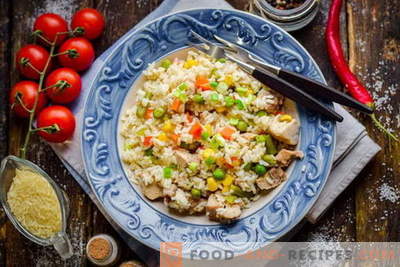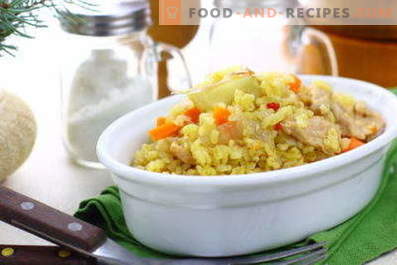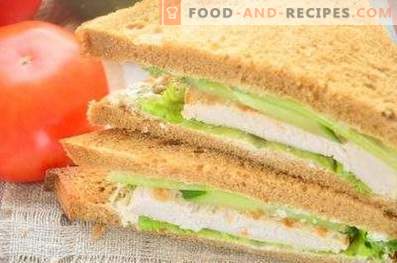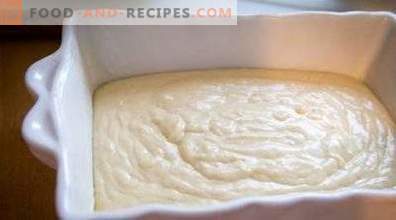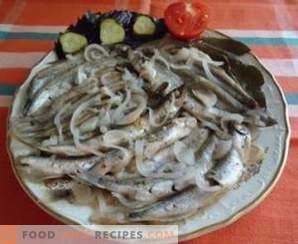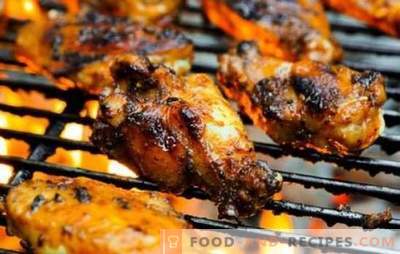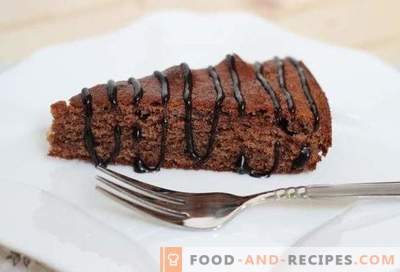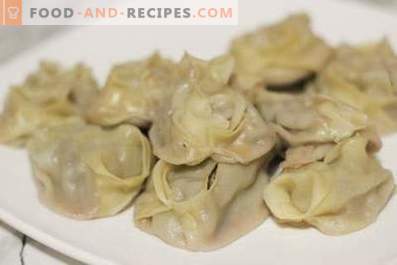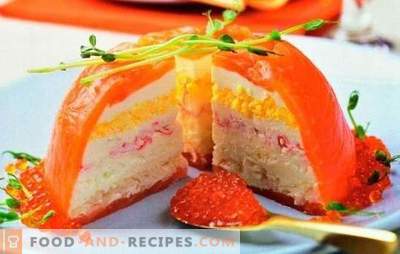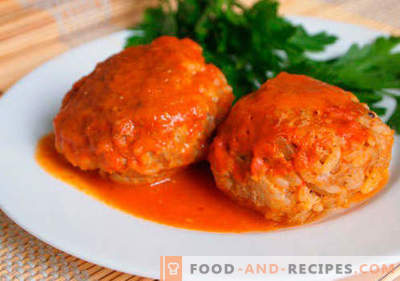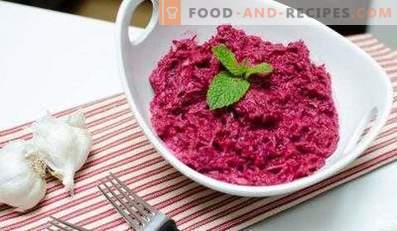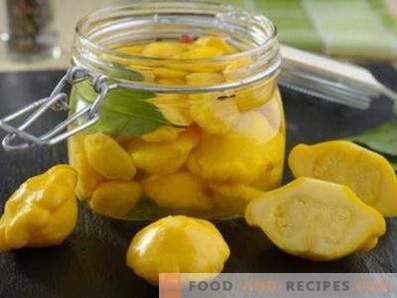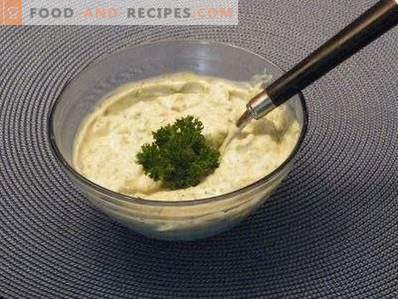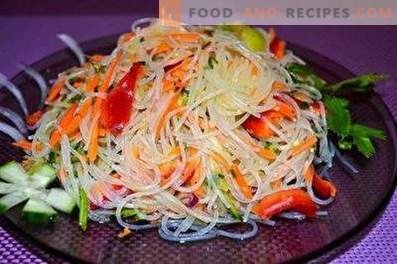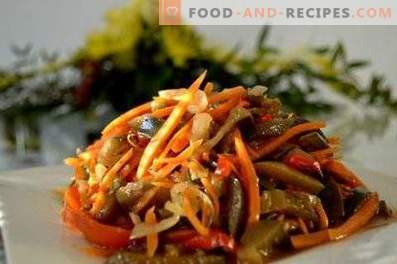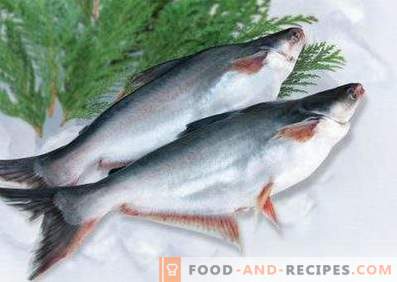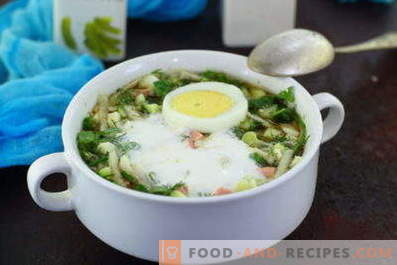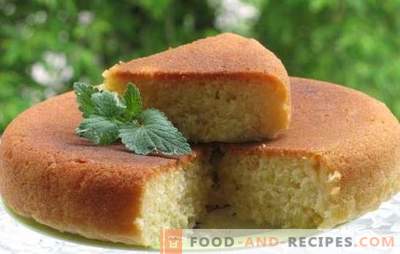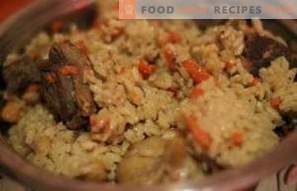
Pilafs have a special place among the main courses. They are in almost any Asian national cuisine: Uzbek, Tajik, Uygur, Kyrgyz, Kazakh. And each representative of these nationalities will argue that it is their pilaf that is real.
But in fact, there are many options for pilaf The technology of its preparation depends on the selected raw materials (meat, vegetables, rice), method of heat treatment, spices. And also on how this dish is prepared.
For example, in classic swim, meat, rice, onions and carrots are used. In addition to this cereal, chickpea (peas), raisins, pomegranate grains are added to the festive dish, decorated with radish, eggs, and raw onions.
It is believed that real pilaf is cooked only from lamb. This is partly the case. But there are many recipes for pilaf from other types of meat: beef, chicken, game, horse meat. Many housewives make pilaf from pork. It turns out too tasty. But if we take into account the fact that pilau is an Asian dish, and the Muslims who inhabit this region do not eat pork, then pilau made from this type of meat can be considered a real stretch.
Despite the different options for preparing pilaf, there are general rules that are taken into account when cooking this dish.
This pilaf: the subtleties of cooking
- The focus is on the choice of rice. It should absorb water well, but it does not fall apart. Different regions have their own varieties of rice. For pilaf, large rice, long-grain, transparent with a minimum amount of flour is suitable.
- Pilaf is cooked in a thick-walled pot - in a cauldron or deep saucepan.
- Meat and vegetables are fried in fat tail or vegetable oil, which is necessarily heated before the appearance of light smoke.
- Special attention is paid to the preparation of zirvak. Meat should be well fried. If there are stones, it is recommended to fry them first. This will give the pilaf an extra taste and more saturated color.
- Onions and carrots for pilaf are cut large: onions - into rings or half rings, and carrots - with large straws. Variety of carrots also affects the taste of pilaf. Red carrot gives it a sweet taste.
- Meat in broth should be stewed over low heat for at least 40 minutes. Zirvak nourishes the taste of meat, onions and carrots, which will positively affect the taste of pilaf.
- Broth is salted just before laying the rice. It should be slightly salty, as rice easily absorbs some of the salt.
- Of the spices and spices, zira, barberry, chili pepper, black pepper, garlic, and saffron are most often added to pilaf.
- To make pilaf crumbly, there should not be a lot of liquid in it. When adding water, you need to make sure that it covers the grits only by 1-2 cm. But it also depends on how well the rice is prepared for laying in the cauldron.
- The rice for pilaf is thoroughly washed several times. This should be done until the water is completely transparent. Then rice is poured with cool water and left for 2 hours. After that, the grits are again washed and laid out on a sieve so that the grains are dry.
- During cooking, the pilaf is not stirred. Only when all the liquid boils away, the upper layers of rice can be gently shoveled with a slotted spoon, without touching the meat and carrots.
- Ready-made pilaf is left in the cauldron for 15-25 minutes and only then spread on a dish or plate.
How this plov is cooked in the countries of Central Asia is written below.
Uzbek classic pilaf
Ingredients:
- lamb - 500 g;
- lamb bone without meat - 150 g;
- rice - 1 kg;
- carrots - 500 g;
- medium sized onions - 5 pcs .;
- lamb fat - 250 g;
- salt - to taste;
- red ground pepper - 2 g.
Preparation Method
- Rice rinse well, changing water several times. Fill with water and leave for two hours. Then rinse it again and place it on a sieve so that the glass can add excess liquid.
- Cut the meat in small pieces.
- In a cauldron, place the fat cut into small cubes and heat on medium heat to cracklings. Then remove the greaves and heat the fat until haze appears.
- Place a bone in the fat and fry until it becomes reddish.
- Add onion, stir, fry until golden brown.
- Place the meat, stir and fry until golden brown.
- Add carrots, salt, pepper. Fry all together until the carrot is golden brown.
- Pour about a liter of hot water and simmer zirvak (broth) on low heat for about half an hour.
- Pour rice in, smooth it. Top up with more water. It should cover the cereal at 1-1, 5 cm.
- Increase heat and bring liquid to a boil. Without covering the cauldron with a lid, boil the pilaf in a boiling boil until all the water has evaporated and absorbed into the rice.
- Make the fire very small. Shumovkoy collect pilaf in the center of the cauldron slide. Cover with a lid.
- Tomi 25 more minutes.
- Stir the pilaf gently and place on the dish.
Note: you can take chicken meat instead of lamb. In this case, mutton fat should be replaced with vegetable oil.
Uzbek pilaf festive “Abundance”
Ingredients:
- rice - 1 kg;
- lamb - 800 g;
- chickpeas (a variety of peas) - 150 g;
- fat - 350 g;
- carrots - 400 g;
- onions - 4 pcs .;
- garlic - 4 heads;
- light raisins - 50 g;
- pomegranate seeds - 50 g;
- salt - to taste;
- spices - to taste.
For decoration:
- hard boiled eggs - 2 pcs .;
- boiled carrots - 1 pc .;
- radish;
- onions.
Preparation Method
- On the eve, soak the peas chickpeas in cold water and leave overnight.
- Rinse the rice thoroughly, changing the water several times. Soak for 2 hours in cold water. Then put it on a sieve to drain excess liquid.
- Pour oil in a cauldron and heat it up. Put onions, cut into rings, and over high heat, fry until golden brown. Make sure that it does not burn, otherwise spoil the taste of pilaf.
- Cut the meat into medium slices. Add to the onions, mix. Fry until brown crust.
- Cut a carrot into medium cubes, place in a cauldron and fry until half cooked.
- Free garlic from the upper scales, cut the bottom, rinse under running water, put in a cauldron. Drain water from peas and add to other products.
- Fill all with hot water so that it only slightly covers the contents of the dish. After the water boils, reduce the fire to a minimum and boil the peas until soft.
- Now, salt and put the spices that are chosen.
- Pour the rice, spreading it evenly over the entire surface of the cauldron. Do not mix!
- Fill the contents with water.
- Without lidding the cauldron, cook the rice over high heat until all the water has boiled away.
- Pour washed raisins over the rice. Cover the pilaf with the lid and cook for another 25 minutes.
- Ready pilaf gently mix with a slotted spoon.
- Put it on a dish and garnish with rosettes of onion filled with pomegranate seeds, as well as egg slices, radish slices and figurines of boiled carrots.
Uzbek wedding pilaf
Ingredients for 10 servings:
- rice - 2 kg;
- lamb (meat and bones) - 2 kg;
- carrots - 2 kg;
- onions - 200 g;
- chickpeas - 200 g;
- cotton oil - 700 g;
- raisins - 100 g;
- peppercorns - 10 g;
- zira - 10 g;
- sugar - 10 g;
- salt - to taste.
Preparation Method
- On the eve, soak the peas (chickpeas) in cold water and leave overnight.
- Rice sort out, rinse well in several waters. Soak for two hours. Then drain the water, putting cereal on a sieve.
- Divide the meat into pieces weighing 500 g. Cut onions into wide rings and carrots into large strips.
- In a large cauldron or pot, perekalite oil until white smoke appears. Put the meat and fry until brown crust.
- Add the onions and cook until soft.
- Place the carrot in an even layer, and on it - chickpeas, peas and other spices, except salt.
- Pour hot water to the level of the cauldron contents.
- Cook on medium heat for about one hour until the peas are soft.
- Put salt and sugar.
- Pour in the rice and spread it over the entire surface. Do not mix!
- Fill with water so that it covers the rump one centimeter.
- Increase fire. Make sure that the boil in the cauldron is uniform. The top layer of rice can be slightly mixed with a slotted spoon, without going deep into the carrots.
- When the liquid boils away, reduce the fire to the minimum. With the help of skimmer rice collect to the middle of the cauldron, making a slide. In several places pierce pilaf with a stick or a narrow knife to the very bottom. This must be done so that the steam from the inside can go outside.
- Cauldron cover and bring the pilaf to readiness for 20-30 minutes, depending on the variety of rice and its condition.
- Remove meat from pilau and cut into slices. Pilaf stir. Put on a dish.
Tajik Pilaf
Ingredients:
- lamb (pulp and bones) - 500 g;
- vegetable oil - 120 g;
- rice - 1, 5 st .;
- medium carrots - 2 pcs .;
- large onions - 1 pc .;
- zira - 5 g;
- barberry - 5 g;
- salt and spices - to taste.
Preparation Method
- Rinse the rice, soak it in warm water for 40-50 minutes. Then rinse again. Drop the strainer to get rid of excess water.
- Wash the lamb and dry it. Separate the meat from the bones. Cut the flesh into large chunks.
- Pour oil in a cauldron and heat up until smoke appears. Put the bones and fry them to a brownish color.
- Take the bones out and put the onion in slices instead. Stir and fry until golden brown.
- Place the meat and fry until golden brown.
- Cut the carrots into strips. Add half of the norm to meat. Sprinkle with jade, barberry, pepper and salt. Stir and fry for another 5 minutes.
- Pour some water and simmer the meat with vegetables for 15 minutes. Add the rest of carrots and boil everything together.
- Pour the prepared rice into the cauldron, smooth it over the entire surface.
- Pour in so much warm or hot water that it covers the cereal one and a half centimeters.
- Cook pilaf over high heat until all water is boiled away. Stir the top layer of rice gently. The cover must be removed.
- When there is no water at all, use a skimmer to gather rice in a slide. In several places make punctures to the very bottom so that the water that remained at the bottom of the cauldron will evaporate more quickly.
- Cover with dishes, make the smallest fire. Cook pilaf for about half an hour.
- Gently mix the rice with the zirvac, taking care not to damage the grains. Put on a dish.
Kyrgyz Pilaf
Ingredients:
- lamb (scapula, brisket) - 500 g;
- beef (pulp) - 500 g;
- rice - 350 g;
- peas (chickpeas) - 150 g;
- onions - 150 g;
- carrots - 500 g;
- vegetable oil - 150 g;
- salt - to taste;
- water - 500-700 ml (depending on the variety of rice);
- apples - 350 g.
Preparation Method
- Pre-rinse and soak the peas in cold water for 10-12 hours. The next day, start cooking pilaf.
- Wash rice well and soak in cool water for 2 hours. Put in a sieve, rinse again and leave in it for draining water.
- Cut the meat into medium sized pieces.
- Pour oil in a cauldron and heat up until smoke appears. Put the meat and lightly fry.
- Add the onions, cut into strips, stir and cook until the meat turns light brown in color.
- Cut the carrot into thin straws and place in a cauldron.
- When the vegetables are well roasted, add water and bring it to a boil.
- Put the halves of apples and simmer them until half cooked. They soften very quickly, so you need to be careful. Put the fruits in a colander and leave in it for now.
- Put prepared peas into the cauldron and cook for half an hour. Salt it. Cover it with rice that is well leveled.
- Without covering the cauldron with a lid, cook the pilaf over high heat until all the water has evaporated and absorbed into the grits.
- Put the apples on the rice, cover the dishes with a lid. Reduce heat to low. Cook for 20-25 minutes.
- Put the apples on a separate plate, and gently mix the pilaf.
- Place pilaf, meat, and apples on the platter.
Mistress to note
When cooking pilaf can not save on oil. If it is not enough, rice or stick together, or burn.
With a large amount of oil, rice absorbs it into itself and therefore does not stick together. When there is a lot of oil, its surplus remains on the bottom of the cauldron and does not allow the pilaf to burn.








